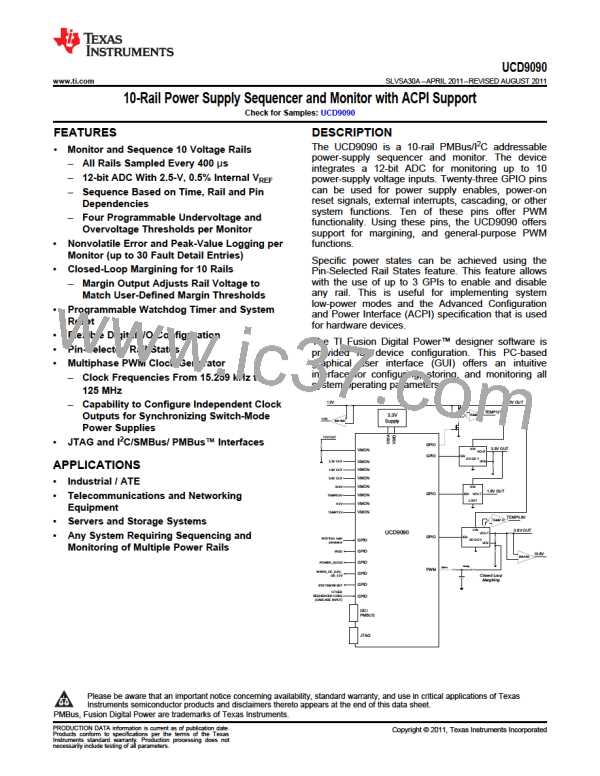UCD9090
www.ti.com
SLVSA30A –APRIL 2011–REVISED AUGUST 2011
Fault responses, along with a number of other parameters including user-specific manufacturing information and
external scaling and offset values, are selected in the different tabs within the Configure function of the Fusion
GUI. Once the configuration satisfies the user requirements, it can be written to device SRAM if Fusion GUI is
connected to a UCD9090 using an I2C/PMBus. SRAM contents can then be stored to data flash memory so that
the configuration remains in the device after a reset or power cycle.
The Fusion GUI Monitor page has a number of options, including a device dashboard and a system dashboard,
for viewing and controlling device and system status.
Figure 6. Fusion GUI Monitor Page
The UCD9090 also has status registers for each rail and the capability to log faults to flash memory for use in
system troubleshooting. This is helpful in the event of a power-supply or system failure. The status registers
(Figure 7) and the fault log (Figure 8) are available in the Fusion GUI. See the UCD90xxx Sequencer and
System Health Controller PMBus Command Reference (SLVU352) and the PMBus Specification for detailed
descriptions of each status register and supported PMBus commands.
Copyright © 2011, Texas Instruments Incorporated
11

 TI [ TEXAS INSTRUMENTS ]
TI [ TEXAS INSTRUMENTS ]